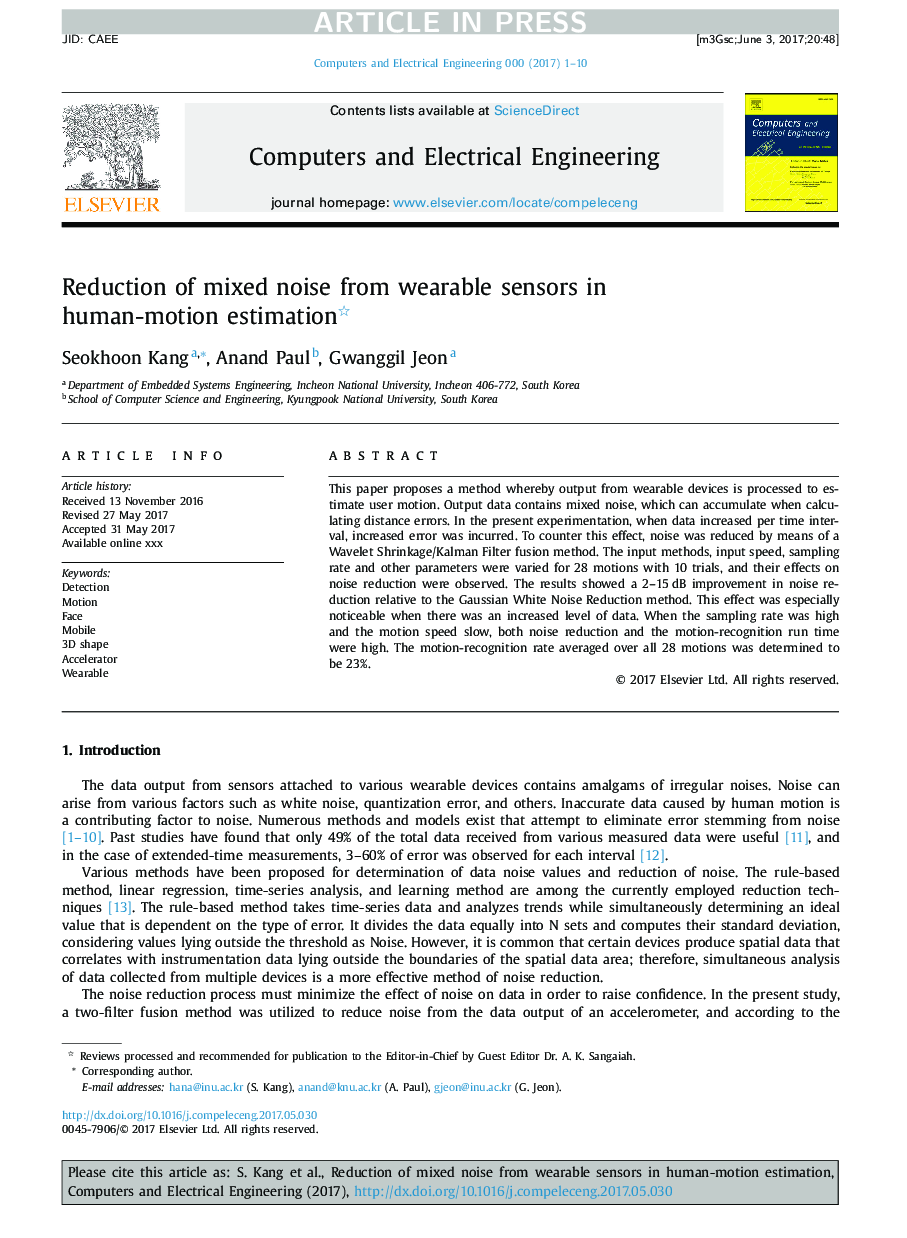| Article ID | Journal | Published Year | Pages | File Type |
|---|---|---|---|---|
| 4955166 | Computers & Electrical Engineering | 2017 | 10 Pages |
Abstract
This paper proposes a method whereby output from wearable devices is processed to estimate user motion. Output data contains mixed noise, which can accumulate when calculating distance errors. In the present experimentation, when data increased per time interval, increased error was incurred. To counter this effect, noise was reduced by means of a Wavelet Shrinkage/Kalman Filter fusion method. The input methods, input speed, sampling rate and other parameters were varied for 28 motions with 10 trials, and their effects on noise reduction were observed. The results showed a 2-15Â dB improvement in noise reduction relative to the Gaussian White Noise Reduction method. This effect was especially noticeable when there was an increased level of data. When the sampling rate was high and the motion speed slow, both noise reduction and the motion-recognition run time were high. The motion-recognition rate averaged over all 28 motions was determined to be 23%.
Related Topics
Physical Sciences and Engineering
Computer Science
Computer Networks and Communications
Authors
Seokhoon Kang, Anand Paul, Gwanggil Jeon,
